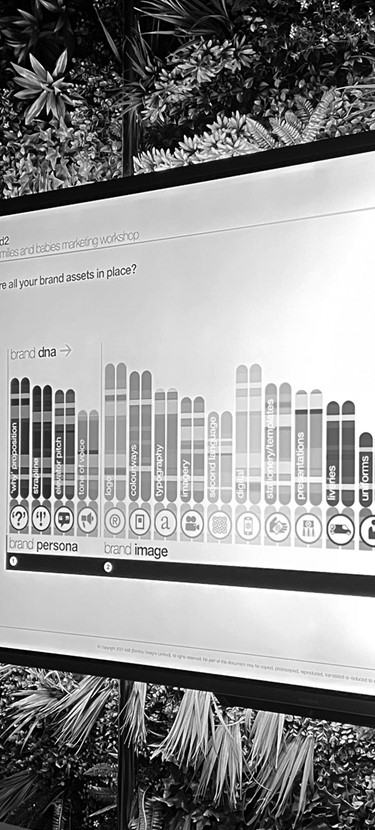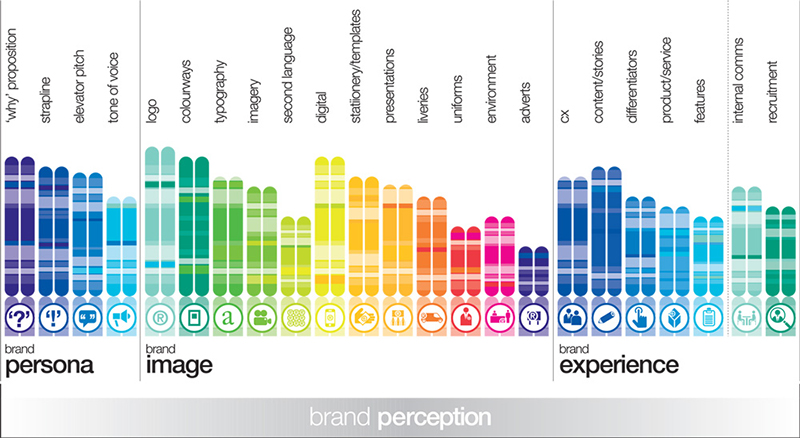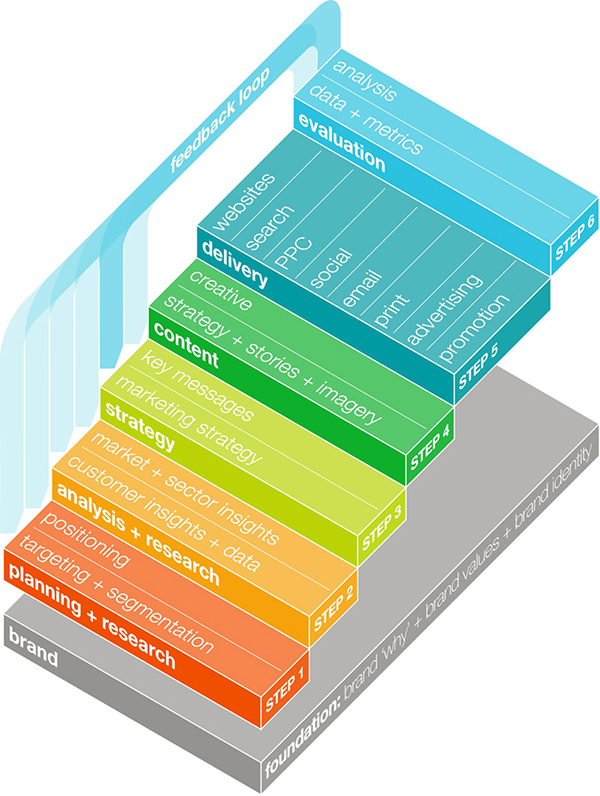
how we
develop
brands
In everything the organisation does. owns and produces it should project a clear idea of what it is. This is achieved by consistency in purpose, performance and appearance.
Wally Olins
brand dna

Start with “why”.
Articulating your brand’s ‘why’ is the most impactful way to communicate a strong value proposition that will differentiate your brand from others.
The ‘who’, ‘what’ and ‘where’ are generally self-explanatory, from the founder’s name [Warburton] to a descriptor of services [My Parcel Delivery] or location [London Business School]. All of these have relevance of course and sometimes great value where a strong reputation has been built over years.
The question of ‘how’ is more interesting, as it might include strengths or values [Speedy Hire] that can differentiate an organisation from the opposition.
Successfully articulating the ‘why’, in addition to ‘how’, is what distinguishes the really successful brands as they express why they do what they do rather than just focusing on what they do . A great example would be Lego whose 'why' statement is “to inspire and develop the builders of tomorrow”.
We work closely with our clients to help them define their brand’s ‘why’ and extend this message across straplines, mission statements or elevator pitches with a specific tone of voice and a clear set of brand values. We also identify all the ‘touchpoints’ where the brand will be presented and experienced. Our key role as designers is then to create a brand identity that encapsulates the brand's values and distinguishes it visually in its marketplace. We devise a structured plan for delivery to build a strong and consistent overall brand perception that will help build value into it.
S6 marketing process

We have devised and refined our own S6 marketing model which is a proven and effective approach to communicating brand messages:
foundations
It’s vital that your brand is fully defined [your ‘why’, values and tone of voice] and all assets in place prior to any campaign to ensure consistency of message and of presentation.
step 1
Clarity and understanding of the target audiences is essential. It requires research and segmentation, then identification of the differentiators to position the pitch.
step 2
Do we understand them and what they want? Gather customer insights, benchmark the competition and research the sectors we’re operating within - build a picture of the landscape and analyse the findings.
step 3
What do we want to say? What are our key messages and are they relevant and appropriate to the target audiences. These insights enable us to develop a marketing strategy which provides a framework and plan of delivery.
step 4
What content will engage the target audiences and deliver our key messages? A content strategy needs to be devised which identifies the stories and subject matter that will engage, these then need to communicated within the brand’s identified ‘tone of voice’ using appropriate media including copywriting, photography, illustration, infographics, video, animation.
step 5
How are we best going to deliver the content and marketing messages? Delivery of the marketing strategy and content needs to consider budgets, cost effectiveness, multi-channel integration for cumulative impact and the overall marketing mix in terms of accessibility, usability and flexibility along with appropriateness and relevance to the audience.
step 6
Finally, it’s important to evaluate the effectiveness of the campaign - it’s unlikely that everything will be 100% effective straight away and circumstances may change. Metrics and analysis of them should feedback, primarily to inform strategy, but also to compliment the research.
Logo Showreel
We've been devising, designing and delivering brand identity programs for over 22 years and have created well over 100 logos as part of this work. To see case studies of some of our complete brand identity projects, please see our work > branding projects.
